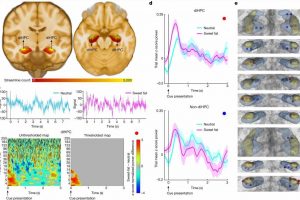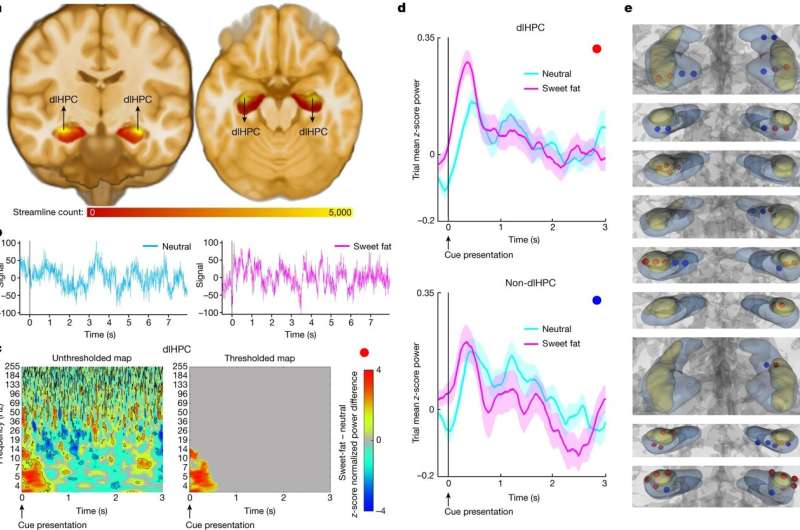Researchers identify the link between memory and appetite


Disrupted connections between memory and appetite regulating brain circuits are directly proportional to body mass index (BMI), notably in patients who suffer from disordered or overeating that can lead to obesity, such as binge eating disorder (BED), according to new research from the Perelman School of Medicine at the University of Pennsylvania.
Published today in Nature, the research notes that individuals who are obese have impaired connections between the dorsolateral hippocampus (dlHPC) and the lateral hypothalamus (LH), which may impact their ability to control or regulate emotional responses when anticipating rewarding meals or treats.
“These findings underscore that some individual’s brains can be fundamentally different in regions that increase the risk for obesity,” senior author, Casey Halpern, MD, an associate professor of Neurosurgery and Chief of Stereotactic and Functional Neurosurgery at Penn Medicine and the Corporal Michael J. Crescenz Veterans Affairs Medical Center.
“Conditions like disordered eating and obesity are a lot more complicated than simply managing self-control and eating healthier. What these individuals need is not more willpower, but the therapeutic equivalent of an electrician that can make right these connections inside their brain.”
The dlHPC is located in the region of the brain that processes memory, and the LH is in the region of the brain that is responsible for keeping the body in a stable state, called homeostasis.
Previous research has found an association with loss of function in the human hippocampus in individuals with obesity and related disordered eating, like BED. However, outside of imaging techniques such as magnetic resonance imaging (MRI), the role of the hippocampus has been difficult to study in humans with obesity and related eating disorders.
In this study, researchers were able to evaluate patients whose brains were already being monitored electrically in the Epilepsy Monitoring Unit. Researchers monitored brain activity as patients anticipated and then received a sweet treat (a chocolate milkshake). They found that both the dlHPC and the LH activated simultaneously when participants anticipated receiving the rewarding meal.
These researchers confirmed using stimulation techniques pioneered by co-authors, Kai Miller, MD, Ph.D., and Dora Hermes Miller, Ph.D., from Mayo Clinic, that this specific zone of the hippocampus, the dlHPC, and LH exhibited extremely strong connectivity, as well.
In individuals with obesity, researchers found that the impairment of this hypothalamus-hippocampus circuit was directly proportional to their BMI. That is, in participants with a high BMI, the connection was even more disturbed.
To further validate the connection, Halpern’s team used a technique called “brain clearing,” to analyze brain tissue. The technique revealed melanin-concentrating hormone, a hormone known to regulate feeding behavior that is produced in the LH. They found the presence of MCH in the dlHPC, and nowhere else, confirming a link between the two regions.
“The hippocampus has never been targeted to treat obesity, or the disordered eating that can sometimes cause obesity,” said Halpern. “We hope to be able to use this research to both identify which individuals who are likely to develop obesity later in life, and to develop novel therapies—both invasive and not—to help improve function of this critical circuit that seems to go awry in patients who are obese.”
More information:
Daniel A. N. Barbosa et al, An orexigenic subnetwork within the human hippocampus, Nature (2023). DOI: 10.1038/s41586-023-06459-w
Journal information:
Nature
Source: Read Full Article